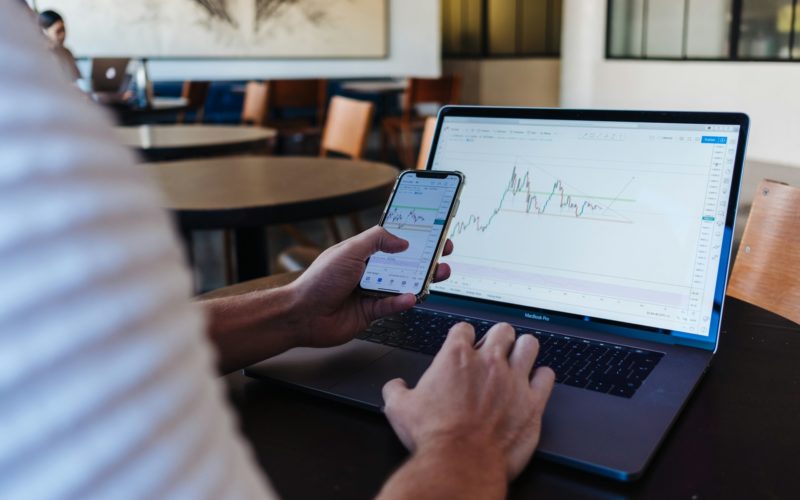Trading in the financial markets can often feel like a high-speed race where every second counts. If you’re a trader, you know the pressure of making split-second decisions and staying on top of constantly shifting market trends. As a part of this fast-paced environment, finding ways to boost your productivity isn’t just beneficial—it’s essential. By incorporating a few strategic productivity hacks, you can sharpen your edge and be your best trader version.
Effective Time Management
Effective time management is the bedrock of any productive trading strategy. Imagine trying to juggle multiple balls without dropping any—that’s a day in the life of a trader. Prioritizing your tasks can make all the difference. Enter the Eisenhower Matrix: a simple yet powerful tool that helps you sort tasks by urgency and importance. This technique ensures that you focus on what truly matters, tackling urgent and important tasks first, while delegating or eliminating less critical activities. This method not only streamlines your workflow but also ensures you’re always on top of essential tasks.
Moreover, setting clear, achievable goals can dramatically improve your time management. Think SMART: Specific, Measurable, Achievable, Relevant, and Time-bound goals. For instance, you might aim to boost your trade accuracy by 10% over the next three months through advanced technical analysis. Such goals keep you focused and motivated, making it easier to celebrate your progress along the way.
Starting your day with a solid routine can also supercharge your productivity. Kick things off with a deep dive into market news and overnight developments to stay informed. Then, allocate specific times for analysis, trading, and reviewing your trades. This routine reduces decision fatigue and builds a disciplined approach to managing your time effectively.
Leveraging Technology
In today’s digital age, leveraging technology is crucial for staying ahead in trading. Modern trading platforms now offer advanced charting tools, real-time data, and comprehensive analytical capabilities. These features enable you to make swift, informed decisions, significantly boosting your efficiency.
But technology goes beyond just having the right tools at your fingertips. Automation can revolutionize your trading process by handling repetitive tasks that can bog you down. For example, automated trading systems can execute trades based on predefined criteria, ensuring that you never miss a market opportunity while freeing up time for strategic thinking. These systems can also backtest strategies using historical data, offering insights into what works and what doesn’t, thus enhancing your trading strategy over time.
Seamlessly integrating various software tools can further streamline your trading operations. Imagine having your portfolio management software connected with news aggregators and your trading platform. This integration ensures all critical information is readily accessible, enabling you to make faster, more informed decisions.
Continuous Learning and Adaptation
The financial markets are constantly evolving, and staying ahead means continuously learning and adapting. Keeping up with the latest market analysis techniques and educational resources is essential. Online courses, webinars, and industry books are excellent ways to expand your knowledge. Platforms offer valuable resources on technical analysis, risk management, and trading psychology.
One aspect of technical analysis that can give you a significant edge is understanding candlestick patterns. Patterns like doji, hammer, and engulfing provide visual clues about market sentiment and potential reversals. By mastering these patterns, you can make more accurate predictions about price movements, refining your overall trading strategy.
Regular feedback and reflection are crucial for ongoing improvement. Analyzing your past trades to understand what worked and what didn’t is a vital practice. Keeping a trading journal can help you track your performance and pinpoint areas for improvement. This habit not only highlights your successes but also reveals patterns that need adjustment, fostering a culture of continuous learning and adaptation.
Maintaining Well-being
The high-pressure environment of trading can be stressful, making mental and physical well-being paramount. Managing stress effectively can improve your focus and decision-making. Techniques like mindfulness and meditation can help reduce stress levels. Simple practices such as deep breathing, visualization, and progressive muscle relaxation can keep you calm, especially during volatile market conditions.
Networking and Mentorship
Networking and mentorship are invaluable for enhancing your trading performance. Building a network of industry professionals can lead to the exchange of ideas and best practices. Attending conferences, joining professional associations, and participating in online forums can keep traders connected and informed.
Finding a mentor with extensive trading experience can provide crucial guidance and support. Mentors can offer advice, share their experiences, and help you navigate challenges, accelerating your learning curve. Participating in trading communities and forums encourages collaborative learning. Engaging in discussions, sharing insights, and seeking feedback from peers can provide new perspectives and enhance your trading strategies. This collaborative environment fosters continuous improvement and innovation.
Conclusion
Boosting trading performance requires a multifaceted approach that includes mastering time management, leveraging technology, committing to continuous learning, maintaining well-being, and building a strong network. By implementing these productivity hacks, financial professionals can enhance their efficiency, make better decisions, and achieve their trading goals. Embrace these strategies, and you’ll be well on your way to maximizing your trading performance and achieving long-term success.












